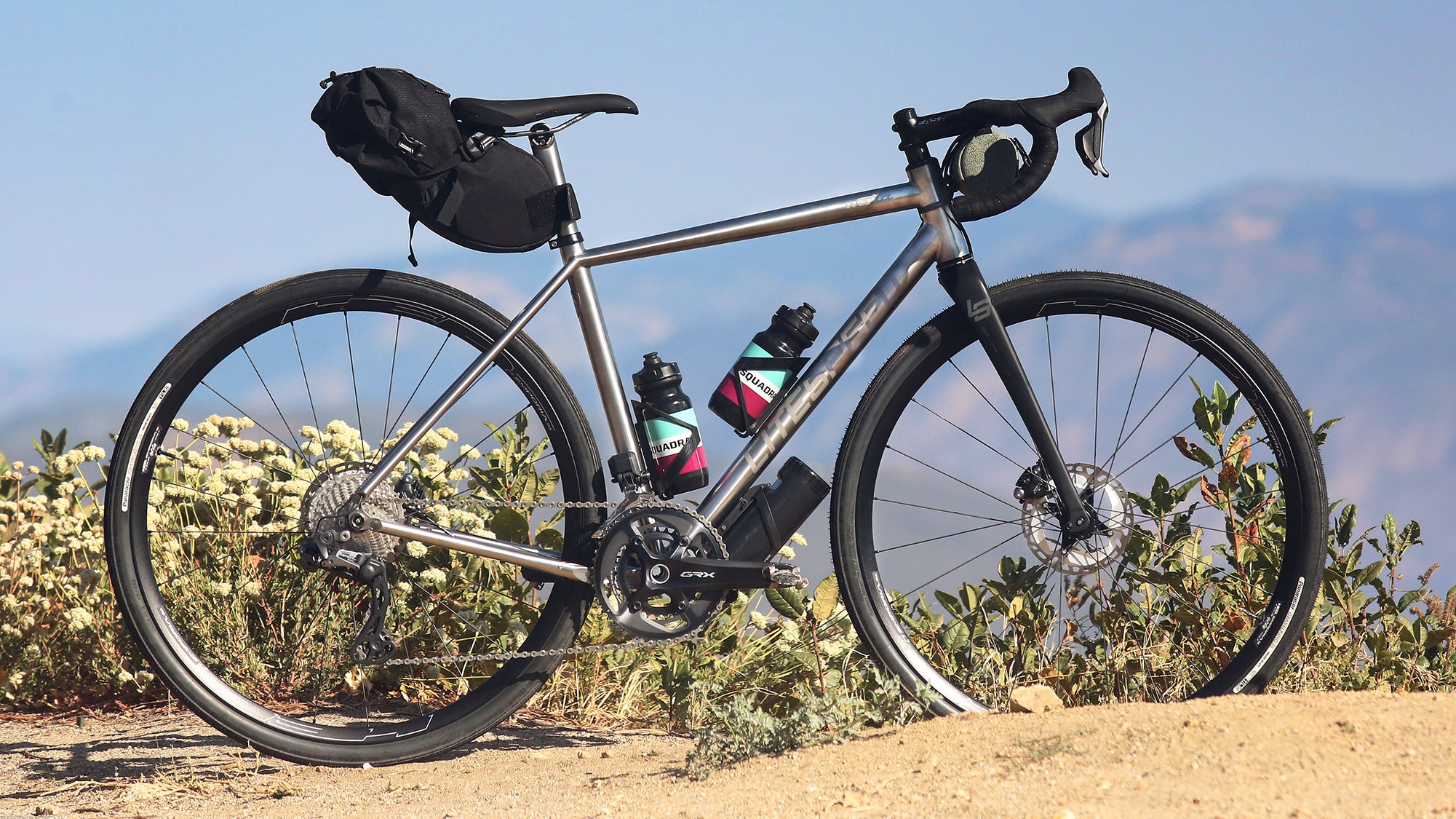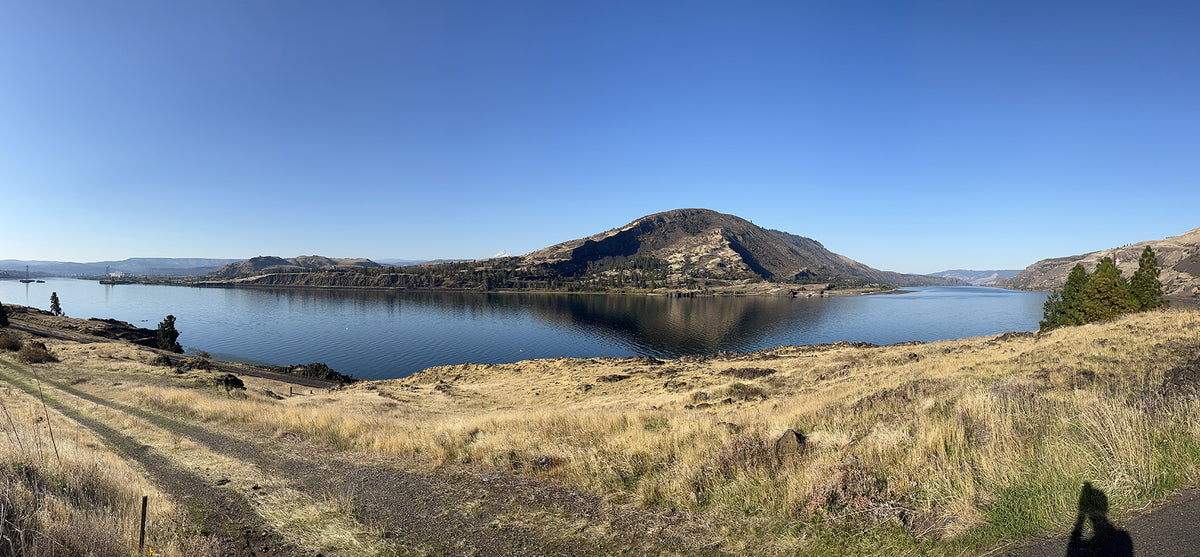Your Cart is Empty

It’s not often we get a chance to get the true “first look” and break the news about a new gravel model. Litespeed sent us a pre-production prototype of their new gravel model, the Watia to test for 4 weeks ahead of its debut. We gave it a good run, riding it in Southern Utah as well as in our backyard in San Diego.

The Watia occupies the sweet spot between Litespeed’s race-focused Ultimate Gravel, and their Cherohala with its more relaxed geometry. The Watia is designed to be Litespeed’s new jack-of-all-trades model that has race chops for long 200-mile fireroad epics, as well as the weekend cruises with friends, all in one of the most technologically-advanced ti bikes on the market.

Lets get right to it. This bike has clearance for 700x45 or 650x53 (27.5" x 2.1")

In a category dominated by carbon construction, a titanium bike really stands out. Riding the Watia gave us an appreciation for titanium as a material in the gravel space. Titanium has the amazing property of absorbing high-frequency vibrations (think washboard dirt roads), rather than transferring it up to the rider at their hands and saddle. It’s lighter than steel, and can be designed by craftsmen to be as stiff as you want in areas like the bottom bracket and headtube, and as forgiving as you want by bending or reshaping the tubeset. It won’t corrode and can be reworked if damaged. Titanium is loved by the aerospace industry for all those reasons. It’s a remarkable alloy… and perfect for gravel.
Litespeed poured a ton of advancement into the Watia. Notably, a cleverly CNC’d chainstay plate, shaped tubing, Internal cable routing, and tons of tire clearance to match today’s modern carbon gravel bikes.

While most titanium gravel bikes are quite staid in their design, looking very much like the bikes of the early 1990s with round tubesets. Those manufacturers are missing the opportunity to truly maximize the qualities titanium is capable of. The Litespeed Watia is a fresh departure, with a look closer to modern carbon fiber gravel bike. It’s compact in design, and instead off simple round tubesets, Litespeed’s Chattanooga, Tenn. facility has the capability to shape the tubesets, allowing the titanium to perform different functions in strategic locations. As an example, the shaping of the top tube as it meets the seatstays allows the frame to soak up more road vibration without sacrificing stiffness. The seamless transition looks as if it could come from a carbon fiber bike.The downtube also sees bottom bracket stiffness enhanced thanks to horizontally-flattened ovalization as it meets the bottom bracket. The headtube is also Internally butted to carve a bit of weight. Like carbon fiber, titanium in the hands of Litespeed’s welders has the capacity to be massaged to yield an optimized ride experience, precisely where you want it.
Litespeed has also gone to the effort to make this bike one of the rare few titanium gravel bikes with an internal cable routing option, as well as their first to allow for internal mechanical shiftcable routing. On our test bike, the rear brake hose ran from the bar to the downtube, then ported into the frame at the top of the non-driveside downtube. For those that choose, there’s also an external-routing version that cuts the costs down. But the clean presentation that the Watia has with cables obscured cannot be denied. especially when it’s all but expected on any carbon bike these days.

But the centerpiece advance that sets the Watia apart is a CNC-cut titanium plate along the driveside chainstay, tucked in behind the chainrings. In lieu of flattening the tubeset at that location (as you would see on a steel bike) or dropping the chainstay (as you see on many carbon bikes), Litespeed opted to create a solid TI plate, which opens up the space required for for larger tire clearance without stealing space from the chainrings. This results in a bike that can run big rings for speed on the road, and big tires for the soupiest, sandiest dirt.

Who’s the ideal candidate for the Watia? Its geometry and handling make it ideal for big days. The geometry is stable and predictable, which is great if you’re doing 200 miles at Dirty Kanza on wide dirt fire roads. The stability and day-long comfort make it perfect for big-mile events. Equally, if you’ve got a big event like Tour Divide, again, the stable handling (and tons of storage capacity) make the Watia a fantastic choice.
Other Watia candidates are simply fans of titanium. It’s one of the toughest materials out there for gravel, without much of a weight penalty. Want a bike that can flick away rocks pinging against the frame, is impervious to rust and is worth handing down to your kids? This is that bike.

The Watia can be configured and ordered directly from Litespeed online, or special-ordered through Litespeed's network of specialty retailers. Our build with Shimano GRX Di2 and 700c Hed Emporia wheels and Litespeed’s titanium post with ENVE fixing hardware prices at $5,945. But it’s infinitely configurable, with mechanical builds, 650b wheel options and external cable routing pricing down as little as $3,500. Don’t see the build you want, say a SRAM 1X build, or an ENVE or Zipp wheelset? Just give them a call, and they can give you a price for the build you want.
Availability? Today! Happily, if you want a Watia, there’s no delay in getting it; they’re available to order now on Litespeed's website.

“A smooth ride on road and off, the Watia’s stable geometry inspired confidence.”
“The bike was amazing on fire roads and bike paths, but on the tight single track in Utah a more nimble bike would have been a better choice.”
“One thing that limited our testing ability was the tires spec'd on the Watia. Panaracer makes a solid product, but the lack of any knobs on the stock Gravel King tires made the front end squeamish in the more challenging off-road sectors of our test location. These tires are much more at home on a mostly road centric route, so when it comes to adventure I suggest opting to equip it with more aggressive rubber.”
“This is a long-ride machine, it could eat a million miles of farm roads. Why are you making me ride it on this technical mountain bike crap?”

The comments sounded a bit under-awed. Im trying to work out whether it was because the MTB singletrack would ride better on a MTB or a overly sluggish handling of the bike itself?. Coming from the UK we have a mix of forest roads, plus easy-ish singletrack as the bread+ butter of our gravel routes. Lots of cornering and twisty tracks but if its so full on singletrack that a MTB would be better, Ill just use a MTB. How does the bike handle on a typical 20% surfaced road, 20% reasonably easy twisty-ish, rollin-ish singletrack, 60% fireroad/ dirt track/forest road 2-6 hour day out? Still sluggish compared to other gravel bikes? The comments weren’t clear if the handling description was this bike vs a xc MTB on theose trails.
Comments will be approved before showing up.

Kris Hull
October 20, 2020
Telen, The Watia is really not made for single track or twisty technical terrain. It is made to eat up miles and miles of non-technical terrain. The Watia would be great for an event like Dirty Kanza. In your example of a long-day out that is 80% road and fire-road, the Watia would be amazing. A bike that handles better on that 20% would be much worse on the 80%. That said, tires with some volume and bite would greatly increase the Watia’s ability to handle technical terrain. Life is all about choices.